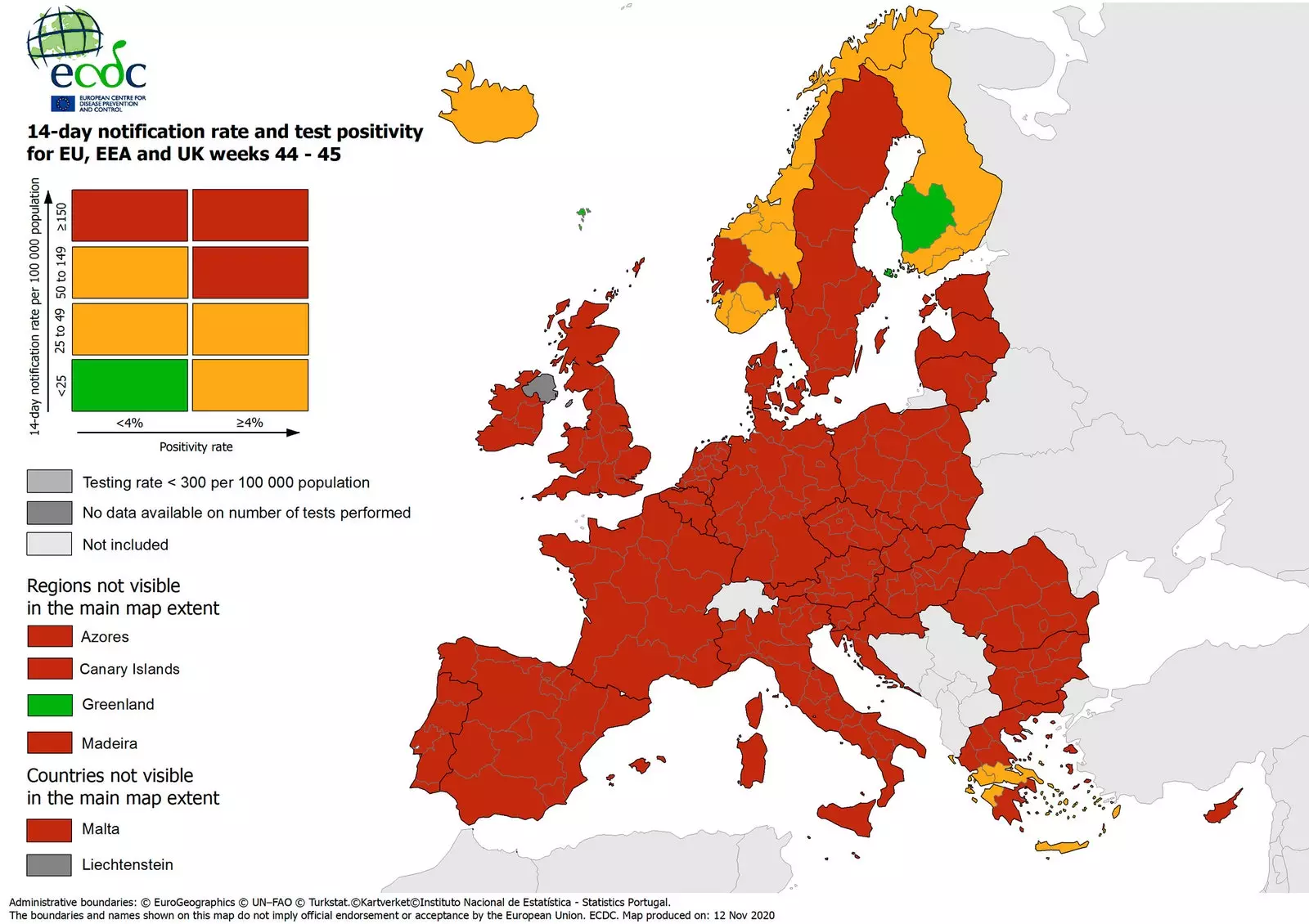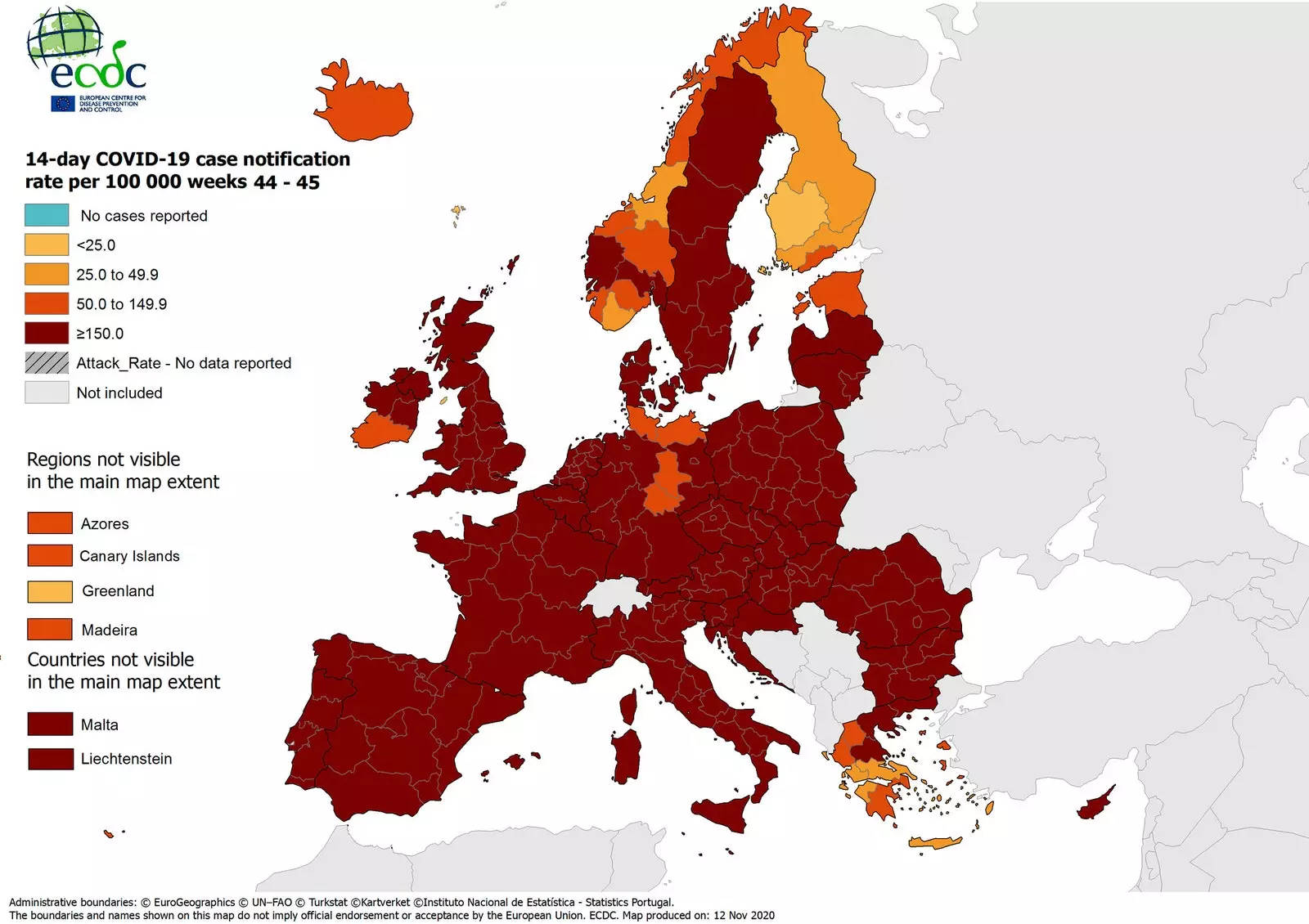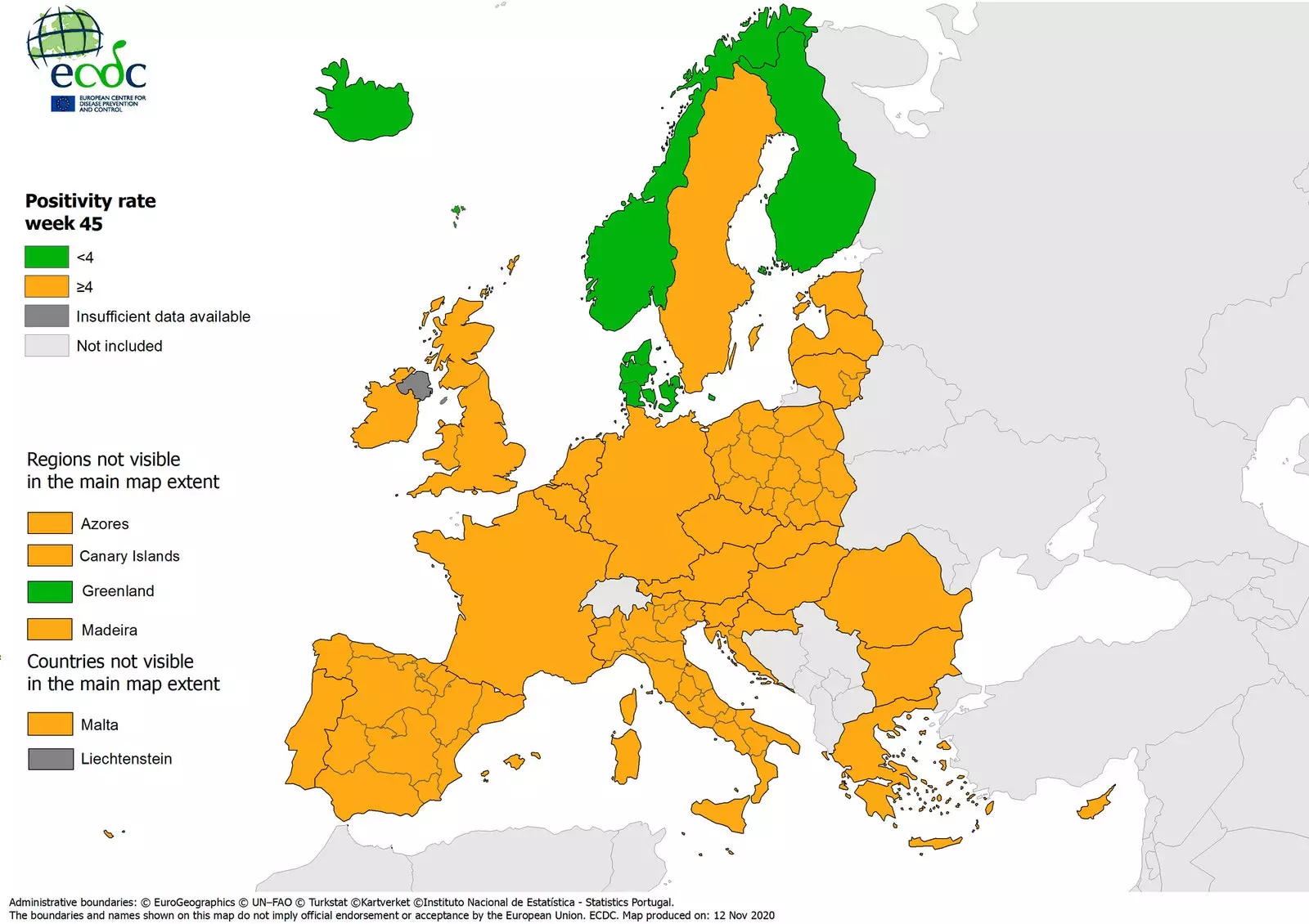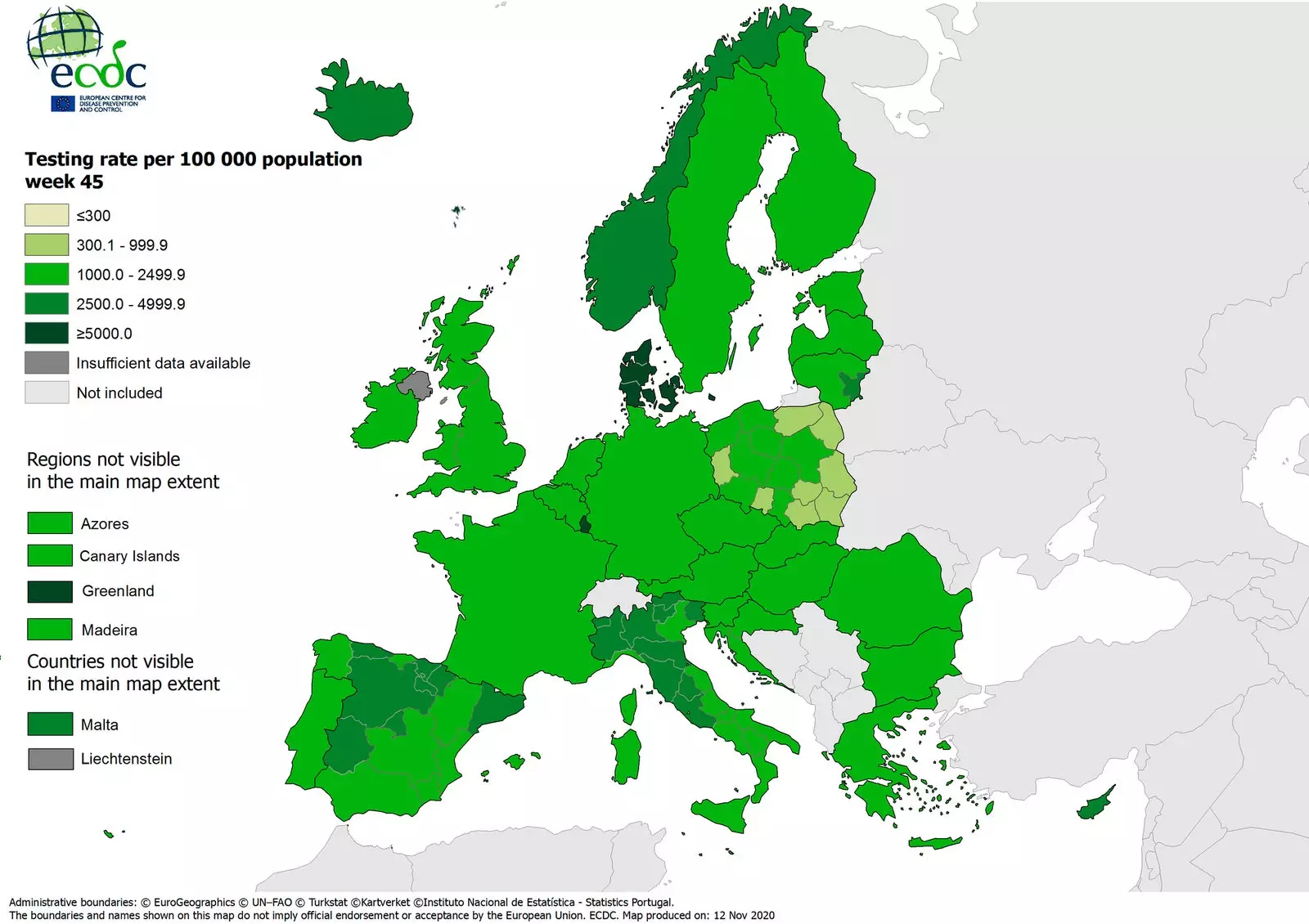
Spain will require a negative PCR from international travelers coming from risk areas
From next November 23 Any international traveler who comes from a risk area will have to present negative results in a PCR made in the previous 72 hours in order to enter Spain.
The measure, which has been included in the Resolution of November 11, 2020, of the General Directorate of Public Health, regarding the health controls to be carried out at the points of entry into Spain, establishes that this information will have to be indicated in the Sanitary Control Form that all passengers must complete before their arrival at a Spanish port or airport and that will now include a question about whether they have a negative PCR carried out in the 72 hours prior to arrival in Spain.

Map of the accumulated incidence in the last 14 days and the index of positive results in the detection tests
This form can be completed electronically through the QR code that is generated on the Spain Travel Health website or the application Spain Travel Health-SpTH. If it couldn't be done like that, may be submitted in paper format prior to shipment. In this case, it must be accompanied by the original document, written in Spanish or English, certifying that the Active Infection Diagnostic Test (PDIA) has been carried out.
Moreover, even if the form is completed electronically, at any time the traveler may be asked to accreditation of the result of the diagnostic test. Said document must contain, at least, the data related to the name of the traveler, passport number or document or national identity card (which must coincide with the one used in the Sanitary Control Form), date of performance of the test, identification and contact information of the center that performs the analysis, technique used and negative result of the test. The admitted PDIA for SARS-CoV-2 is PCR.
This new requirement is in addition to visual and temperature checks that are currently being carried out in Spanish airports and ports for all those passengers who have Spain as the final destination of their trip.
HOW IS IT DETERMINED WHICH AREAS ARE AT RISK?
To prepare the list of countries and risk areas of the European Union or the European Economic Area from which international passengers will have to present a negative PCR, it has been taken into account Council Recommendation 2020/1475, which includes publication by the European Center for Disease Prevention and Control of a map with the areas classified by colors according to the risk they present, taking into account the data provided by each of the Member States for its preparation.

Map of the accumulated incidence per 100,000 inhabitants in the last two weeks
A) Yes, Spain in its list has included the territories that appear marked on this map in red or gray (first image of this article). Red implies that one of these two situations occurs in the territory in question: it presents a cumulative rate of notification of Covid-19 cases in the last 14 days equal to or greater than 50 per 100,000 inhabitants and 4% of positive results in screening tests; or that the cumulative rate of notification of Covid-19 cases in the last two weeks is greater than 150 per 100,000 inhabitants. Gray, on the other hand, refers to the fact that there is not enough information to evaluate or that the detection test rate is 300 or less per 100,000 inhabitants.
In the case of third countries or territories, it has been taken into account a cumulative incidence greater than 150 per 100,000 population in 14 days, according to data from the European Center for Disease Prevention and Control.
WHAT TERRITORIES ARE AT RISK?
Currently, in the European Union and the European Economic Area, countries and areas at risk would be considered Germany, Austria, Belgium, Bulgaria, Czechia, Cyprus, Croatia, Denmark (except the Faroe Islands and Greenland), Slovenia, Estonia, France, Greece (except Kitri, Ionia Nisia, Dytiki Ellada and Sterea Ellada regions), Hungary, Ireland, Iceland, Italy, Latvia, Lithuania, Luxembourg, Malta, Norway (except the regions of Rogaland, Møre og Romsdal, Nordland, Viken, Innlandet, Vestfold og Telemark, Agder, Vestland, Trøndelag and Troms og Finnmark), Netherlands, Poland, Portugal (except the autonomous region of the Azores Island), Romania, Sweden, Liechtenstein and Slovakia.

Map of the percentage of positive results in screening tests
Outside the European Union and the European Economic Area, they would be included in this list Albania, Andorra, Argentina, Armenia, Aruba, Bahrain, Belize, Bosnia and Herzegovina, Cape Verde, Colombia, Costa Rica, United Arab Emirates, United States, Russia, Georgia, Gibraltar (United Kingdom), Guam, Jordan, Kuwait, Lebanon , Libya, North Macedonia, Morocco, Moldova, Monaco, Montenegro, Palestine, Panama, French Polynesia, Puerto Rico, United Kingdom, San Marino, Saint Martin, Serbia, Switzerland, Tunisia and Ukraine.
These territories and the criteria used for their definition they will be reviewed every 15 days and their update will be published on the website of the Ministry of Health and on that of Spain Travel Health, although it will not be effective until seven days after being published to allow transport companies, travel agencies and tour operators to adjust the information measures for passengers.

Number of tests carried out per 100,000 inhabitants in the last 14 days
